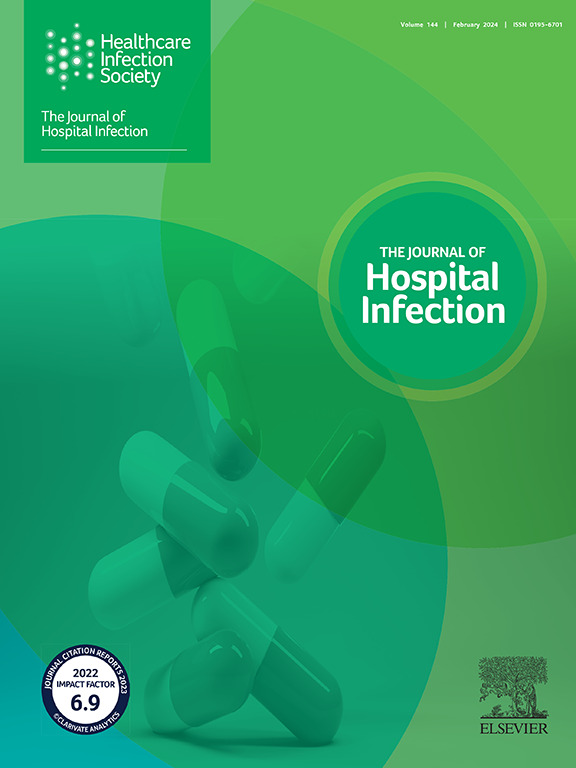A nationwide mixed-methods study of gaps and barriers to implementation of antimicrobial stewardship programmes in hospitals in Indonesia
IF 3.9
3区 医学
Q1 INFECTIOUS DISEASES
引用次数: 0
Abstract
Background
There is an urgent need to understand the implementation barriers of antimicrobial stewardship programmes (ASPs) in low- and middle-income countries.
Methods
We conducted a mixed-methods study in public and private hospitals across all provinces in Indonesia (March–December 2023). We used a self-assessment questionnaire with a scoring system, and multi-level ordinal regression to assess associations with hospital and district-level characteristics. Focus group discussions (FGDs) with hospital stakeholders examined barriers and enablers. We applied a patient safety framework to integrate results.
Results
A total of 575 (19%) of 3026 hospitals completed the self-assessment, of whom 516 (89.7%) had a formal ASP (median 4 (interquartile range (IQR) 1–5] years), and 14 participated in FGD. The median overall ASP development score was 48.4% (35.9–62.5%), classifying 41 (8.0%) hospitals as inadequate (0–25%), 237 (45.9%) as basic (26–50%), 179 (34.7%) as intermediate (51–75%) and 59 (11.4%) as advanced (76–100%). Scores were highest for hospital leadership support (83.4% (IQR 66.7–100%)), followed by ASP team and infectious disease training (66.7% (IQR 55.6–77.8%)); education (50% (IQR 0.0–75.0%)); ASP interventions (43.8% (IQR 18.7–68.7%)); hospital infrastructure (42.9% (IQR 14.3–71.4%)); and monitoring, reporting and feedback (40.9% (IQR 27.3–54.5%)). A higher ASP development score was associated with higher hospital tiered level, longer ASP duration, and higher district-level Public Health Development Index and per capita domestic expenditure, but not with hospital ownership or geographic region. FGDs highlighted barriers related to hospital leadership support, staff technical and behavioural skills, cross-disciplinary collaboration, fear of loss of prescriber autonomy, microbiology and IT support, and hospital accreditation.
Conclusions
Identified implementation barriers can inform actions for context-specific, sustainable improvement of ASPs.
关于印度尼西亚医院实施抗菌药物管理计划的差距和障碍的全国性混合方法研究。
背景:迫切需要了解抗菌药物管理计划(ASP)在中低收入国家的实施障碍:迫切需要了解抗菌药物管理计划(ASP)在中低收入国家的实施障碍:我们在印度尼西亚各省的公立和私立医院开展了一项混合方法研究(2023 年 3 月至 12 月)。我们使用了带有评分系统的自我评估问卷,并通过多层次序数回归评估了与医院和地区特征之间的关联。与医院利益相关者进行的焦点小组讨论(FGD)探讨了障碍和促进因素。我们采用了患者安全框架来整合结果:3026 家医院中有 575 家(19%)完成了自我评估,其中 516 家(89.7%)拥有正式的 ASP(中位数为 4 [IQR1-5] 年),14 家参与了 FGD。ASP 总体发展得分的中位数为 48.4% (35.9-62.5%),41 家(8.0%)医院为不足(0-25%),237 家(45.9%)为基本(26-50%),179 家(34.7%)为中等(51-75%),59 家(11.4%)为高级(76-100%)。得分最高的是医院领导支持(83.4%[66.7-100%]),其次是 ASP 团队和传染病培训(66.7%[55.6-77.8%]);教育(50%[0.0-75.0%]);ASP 干预(43.8%[18.7-68.7%]);医院基础设施(42.9%[14.3-71.4%]);以及监测、报告和反馈(40.9%[27.3-54.5%])。较高的 ASP 发展得分与较高的医院分级水平、较长的 ASP 持续时间、较高的地区级公共卫生发展指数和人均国内支出有关,但与医院所有权或地理区域无关。专题小组讨论强调了与医院领导支持、员工技术和行为技能、跨学科合作、担心失去处方自主权、微生物学和信息技术支持以及医院认证有关的障碍:已发现的实施障碍可为针对具体情况、可持续改进 ASP 的行动提供参考。
本文章由计算机程序翻译,如有差异,请以英文原文为准。
求助全文
约1分钟内获得全文
求助全文
来源期刊

Journal of Hospital Infection
医学-传染病学
CiteScore
12.70
自引率
5.80%
发文量
271
审稿时长
19 days
期刊介绍:
The Journal of Hospital Infection is the editorially independent scientific publication of the Healthcare Infection Society. The aim of the Journal is to publish high quality research and information relating to infection prevention and control that is relevant to an international audience.
The Journal welcomes submissions that relate to all aspects of infection prevention and control in healthcare settings. This includes submissions that:
provide new insight into the epidemiology, surveillance, or prevention and control of healthcare-associated infections and antimicrobial resistance in healthcare settings;
provide new insight into cleaning, disinfection and decontamination;
provide new insight into the design of healthcare premises;
describe novel aspects of outbreaks of infection;
throw light on techniques for effective antimicrobial stewardship;
describe novel techniques (laboratory-based or point of care) for the detection of infection or antimicrobial resistance in the healthcare setting, particularly if these can be used to facilitate infection prevention and control;
improve understanding of the motivations of safe healthcare behaviour, or describe techniques for achieving behavioural and cultural change;
improve understanding of the use of IT systems in infection surveillance and prevention and control.
 求助内容:
求助内容: 应助结果提醒方式:
应助结果提醒方式:


